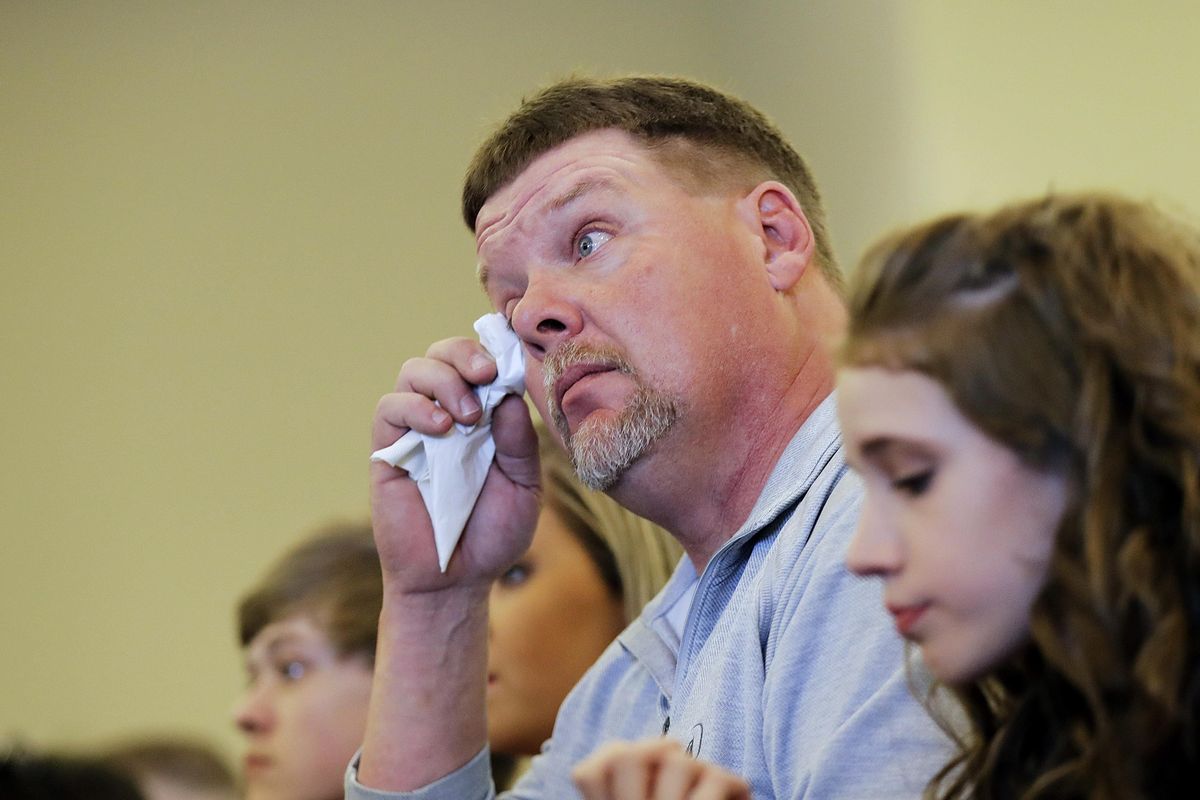A Georgia mother battles opioids to win back her kids

ELLIJAY, Georgia – The First Baptist Church auditorium was filling with an expectant crowd, friends and family who had been through so much. Kim Silvers’ three young daughters were there, all dressed up and eager for the graduation, hoping to mark the end of years of heartache visited on them by their mother’s addiction.
They had begged her to stop using opioids and heard her promise to do so, only to break that vow repeatedly. They’d cried when she abandoned them, and again when they were sent to different foster homes. Then their mother enlisted in a rigorous court-run treatment program – her best, last chance to avoid permanent loss of her children.
On this Tuesday evening, the program’s culmination was at hand. The would-be graduates just had one final duty: providing another batch of urine samples to be drug-tested.
Across the United States, the opioid epidemic has triggered a surge of children removed from the custody of addicted parents. Georgia’s foster care population soared from about 7,600 in September 2013 to more than 13,700 as of August. Parental substance abuse now accounts for about 40 percent of the state’s foster care entries.
In response, family drug courts like the program Silvers entered have been spreading. There are now roughly 450 such programs across the U.S., says Phil Breitenbucher of Children and Family Futures, but they still reach less than 20 percent of the population that needs them.
Silvers says drugs so consumed her life that she’d likely be dead without this type of help – the constant monitoring and testing, curfews and court appearances, mandatory classes, jail time for infractions.
“I knew I had to do this for my girls,” she says.
Substance abuse cast a shadow on Silvers’ life from girlhood; both her parents were alcoholics. By the time she turned 22, Silvers and a boyfriend were parents to three little girls: Emily, Kelsey and Allison. She started drinking heavily herself after Allie, her youngest, was born in 2005. After Silvers shattered her pelvis in a drunken fall, a doctor prescribed a painkiller containing the opioid oxycodone. Addiction followed.
Emily, her oldest, remembers a mother who often seemed drowsy, sometimes drooling. “I didn’t want to see her like that,” she says, “and to see my sisters, how they were sad.”
On school days, Silvers would often rouse herself from bed to find that Emily, then about 11, had woken the younger girls, organized breakfast, and gotten everyone on the bus to school. “I just wanted to be a kid,” says the girl, now 16.
Silvers would promise to stop using, then indulge again. She moved in with a relative who kept her supplied with painkillers, leaving her daughters with their paternal grandmother, who eventually called child welfare. The girls were placed in different homes; Allie moved around 14 times in all, and saw her mother only about once a month.
When the state threatened to terminate her parental rights, Silvers entered the Appalachian Judicial Circuit’s treatment program that very day – on March 17, 2014.
The goal of the two-year program is simple, yet hard to achieve: to stop substance abuse by parents at risk of losing permanent custody of their kids.
“We call it a voluntary program, but if the state has your children, it’s not completely voluntary,” says Judge Jan Wheeler, who oversees the effort.
Participants sign a contract binding them to 32 commitments. They must get a job and attend training classes. Early on, there’s a 7 p.m. curfew. Random drug tests are frequent.
Lapses bring sanctions, up to possible expulsion. Along with its 93 graduates over the years, the Georgia program has had 98 cases where participants quit or were expelled.
After a year, Silvers regained custody of her daughters. But there were logistical stresses and other setbacks.
At one point, some friends suggested she try kratom, an herb with opioid-like properties that is legal but forbidden under drug court rules. When a lab test discovered it, Silvers confessed and remained in the program. But as she neared its final phase, she relapsed with kratom again. The trigger, she says, was discovering that Allison had been mistreated in her last foster home.
Silvers penned a remorseful letter to Judge Wheeler, but the court ordered a third year in the program, plus 15 weekends in jail.
Behind bars, Silvers realized she’d come too far to quit. She sought treatment for depression; she and the girls went to counseling sessions.
This past spring, at graduation, Silvers took the stage, thanking her daughters and friends for their support.
“This is the first day of the rest of my life,” she told the crowd.
Emily is just grateful to finally have her mom back. “I love waking up and she’s always, like, ‘Get up! Go to school!’ ” she says. “I don’t want to get up, but I love hearing her voice.”
Seven months after the graduation, 34-year-old Silvers is now branch manager at a credit union, and says all three daughters are doing well in school.
“Every day is not perfect,” she says. “But we are grateful for how far that we’ve all come.”